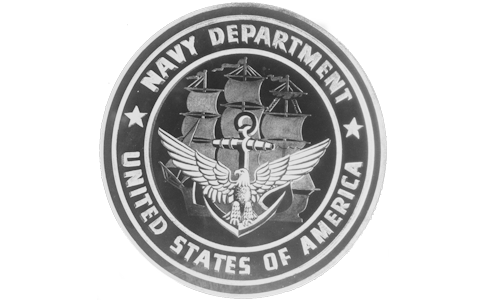Navy Department Communique No. 39
FEBRUARY 12, 1942
(For release morning papers, Friday, February 13, 1942)
The Navy Department issued the following communiqué today:
Central Pacific.
On February 1, 1942, the Navy Department announced that units of the United States Pacific Fleet had made surprise attacks on Japanese naval and air bases in the Marshall and Gilbert Islands. The results of these attacks are now available.
On January 31, 1942, Vice Admiral William F. Halsey, Jr., in command of a well-balanced force of aircraft carriers, cruisers and destroyers raided the Japanese strongholds on Roi, Kwajalein, Wotje, Taroa, and Jaluit Islands of the Marshall group and Makin Island in the Gilbert group.
The results of these separate actions follow:
Roi Island.
On this island of the Kwajalein Atoll a well-equipped air base was located with 12 fighter planes and several bombers. Two hangars, an ammunition dump, all fuel storage, all other storage and warehouses, a radio building, and 3 fighter planes and 6 scout bombers in the air, in addition to 1 bomber on the ground, were destroyed.
Kwajalein Island.
At this anchorage 10 surface ships, 5 submarines and a seaplane base were located. Our attacking forces destroyed 1 converted 17,000-ton aircraft carrier of the Yawata class, 11 fight cruiser, 1 destroyer, 3 large fleet tankers, 1 cargo vessel, 2 submarines and 2 large seaplanes. Other enemy vessels were badly damaged.
Our losses in the two above attacks were four scout bombers.
Wotje Atoll.
No planes were found on the Wotje Atoll. There were present, however, 9 vessels of various categories in the harbor. 4 cargo vessels of about 5,000 tons each were destroyed in addition to three smaller ships. The entire shore installation consisting of two hangars, oil and gasoline stowage, shops and storehouses two antiaircraft batteries and 5 coastal guns, was completely destroyed.
There was no damage or loss to our attacking forces.
Taroa Island.
On this island a new, well-equipped airfield was attacked. Two hangars, all fuel tanks, and industrial buildings were destroyed. Seven fighter planes and five scout bombers in the air, plus five fighters and six bombers on the ground were also destroyed.
Our only loss in this attack was one scout bomber. In addition, a U. S. cruiser sustained a hit from one small bomb.
RECAPITULATION
Enemy losses from Admiral Halsey’s combined attacks included 1 converted 17,000-ton aircraft carrier of the Yawata class, 1 light cruiser,
1 destroyer, 3 large fleet tankers, 2 submarines, 5 cargo vessels, and 3 smaller ships while several other ships were badly damaged. Two large seaplanes, 15 fighter planes, 11 scout bombers, and 10 additional bombers seaplanes were also destroyed.
In addition, destruction to enemy shore establishments was as follows:
At Roi – Two hangars, ammunition dumps, fuel stowage, all store and warehouses, and the radio building.
At Wotje – Entire shore installation-two hangars, oil and gas stowage, shops and storehouses, two antiaircraft batteries, and five intermediate coastal guns.
At Taroa – Two hangars, all fuel tanks, and industrial buildings.
The raid of our forces on the Island of Jaluit was conducted in a heavy rainstorm. Our aircraft attacked two enemy auxiliary vessels, badly damaging one of them.
At Makin Island, these forces destroyed two enemy patrol planes and badly damaged one auxiliary vessel. In addition, one enemy patrol plane was destroyed at sea.
There is nothing to report from other areas.
CONFIDENTIAL NOTE TO EDITORS
This communiqué in no way changes the 12 noon (e. w. t.) Friday, February 13, release date of the correspondents’ stories filed from Honolulu.
Far East.
The following new naval commands have been established to take effect immediately:
- Forces which formerly constituted the Asiatic Fleet are now known as the U. S. Naval Forces, Southwest Pacific. Vice Admiral William A. Glassford, Jr., U. S. Navy, commands these forces.
- Admiral Thomas C. Hart is Commander of the combined Naval forces in the ABDA (American-British-Dutch-Australian) Area.
- Combined Naval Forces of the Australian-New Zealand Area have been established with Vice Admiral Herbert F. Leary, U. S. Navy, in command. His title is Commander Anzac Forces.
Atlantic Area.
Axis submarines continue to operate over a wide area in the Atlantic Ocean, including the coastal waters of the United States. Their attacks on Allied merchant shipping are being combated vigorously with increasing success by our forces.
